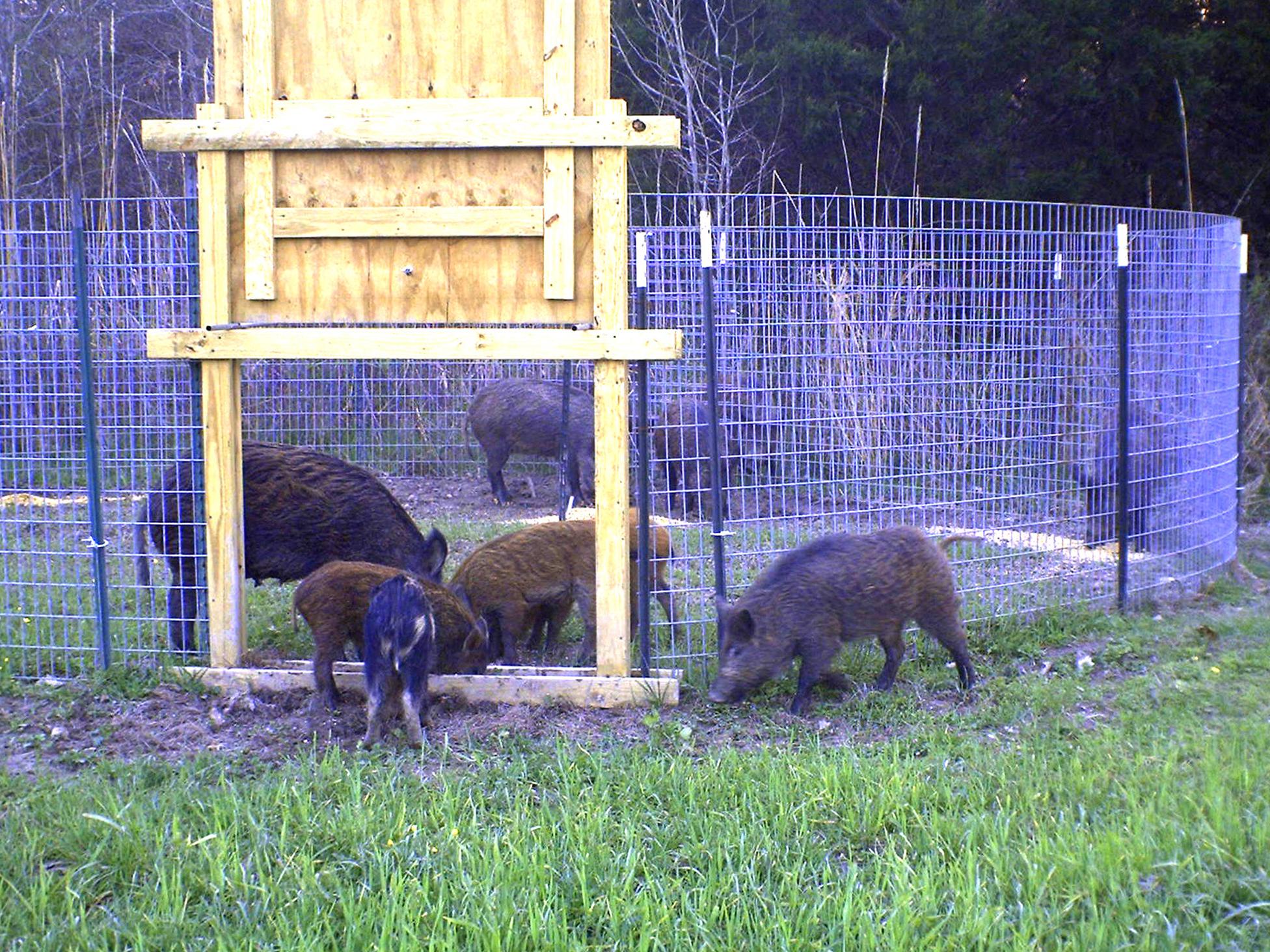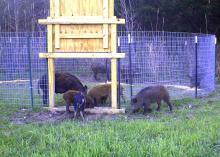Information Possibly Outdated
The information presented on this page was originally released on January 19, 2018. It may not be outdated, but please search our site for more current information. If you plan to quote or reference this information in a publication, please check with the Extension specialist or author before proceeding.
Winter conditions improve wild hog trapping results
STARKVILLE, Miss. -- Wild hogs are a tremendous problem for farmers and landowners throughout the state of Mississippi.
Wild hogs have a growth rate that exceeds any other large mammal in North America. An adult sow typically produces four to eight piglets per litter -- at least double that of white-tailed deer.
Currently, the best way to reduce hog populations is through trapping. Hunting and shooting have their place, but a well-organized trapping program will yield the best results relative to time and effort. The key to getting a hog in a trap is through its stomach.
Wild hogs are classified as omnivores, which means they eat both plant and animal matter. About 90 percent of a hog’s diet is plant matter, including roots, fruits, acorns and -- much to the chagrin of our Mississippi farmers -- crops like corn, soybeans, rice, peanuts and sweet potatoes. The remaining 10 percent of a hog’s diet is meat, which it acquires opportunistically. This essentially means it eats any meat it can find, such as mice, salamanders, frogs, snakes, rabbits and deer fawns.
Winter is the best season for hog trapping because most of the foods that hogs relish are limited in cold months. Summer crops that hogs demolish have not yet been planted, and their favorite naturally occurring foods, such as blackberries, persimmons and muscadines, have already been eaten. Probably the most sought-after wintertime food is acorns, which is unfortunate for our native wildlife species, including deer, turkey and squirrels. When acorns are available, trapping can be difficult simply because hogs aren’t nearly as attracted to bait when Mother Nature’s candy is abundant on the forest floor.
It may be best to wait until deer season has closed to minimize activity in the woods and to reduce any legal constraints when using grain-based foods for hog bait. Always check with the Mississippi Department of Wildlife, Fisheries and Parks at http://www.mdwfp.com for hog trapping regulations.
Here are a few tips for effectively trapping hogs.
The bigger the trap, the better. Small box traps are occasionally used to catch an individual hog, but that is not our goal. Instead, choose a corral-style trap to catch several hogs each time the trap is triggered. Also, because corral traps do not have a top or roof, nontarget animals that may get trapped can escape without harm.
Do your homework. Pick a trapping location that has plenty of evidence that hogs routinely visit the area. Then, start the baiting process. Use a trail camera so you can determine how many hogs are routinely visiting the site and consuming the bait.
Construct the trap. It may take several days to convince the hogs to enter the corral to consume the bait. Trail-camera information becomes critically important. Don’t set the trap or engage the triggered trap door until you have photographic evidence that all the hogs are entering and feeding in the trap. When you determine that all the hogs feel secure entering the trap, it’s time to set the trap door trigger.
Technology is making this process even more efficient -- a camera at the trap site will send photographs to your cell phone. What’s even cooler is that you can send a signal back to the camera to tell it to close the trap door! This technology improves trapping efficiency. Of course, this technology will cost more, so you will have to determine if this newer technology is right for your situation.
Unfortunately for our farms, forests and wildlife, we are in for a long fight if we are to control wild hogs and keep them from spreading. For more information about wild hogs and how to control this invasive pest, please visit our MSU Extension website at http://www.WildPigInfo.com.

Editor’s Note: Extension Outdoors is a column authored by several different experts in the Mississippi State University Extension Service.






